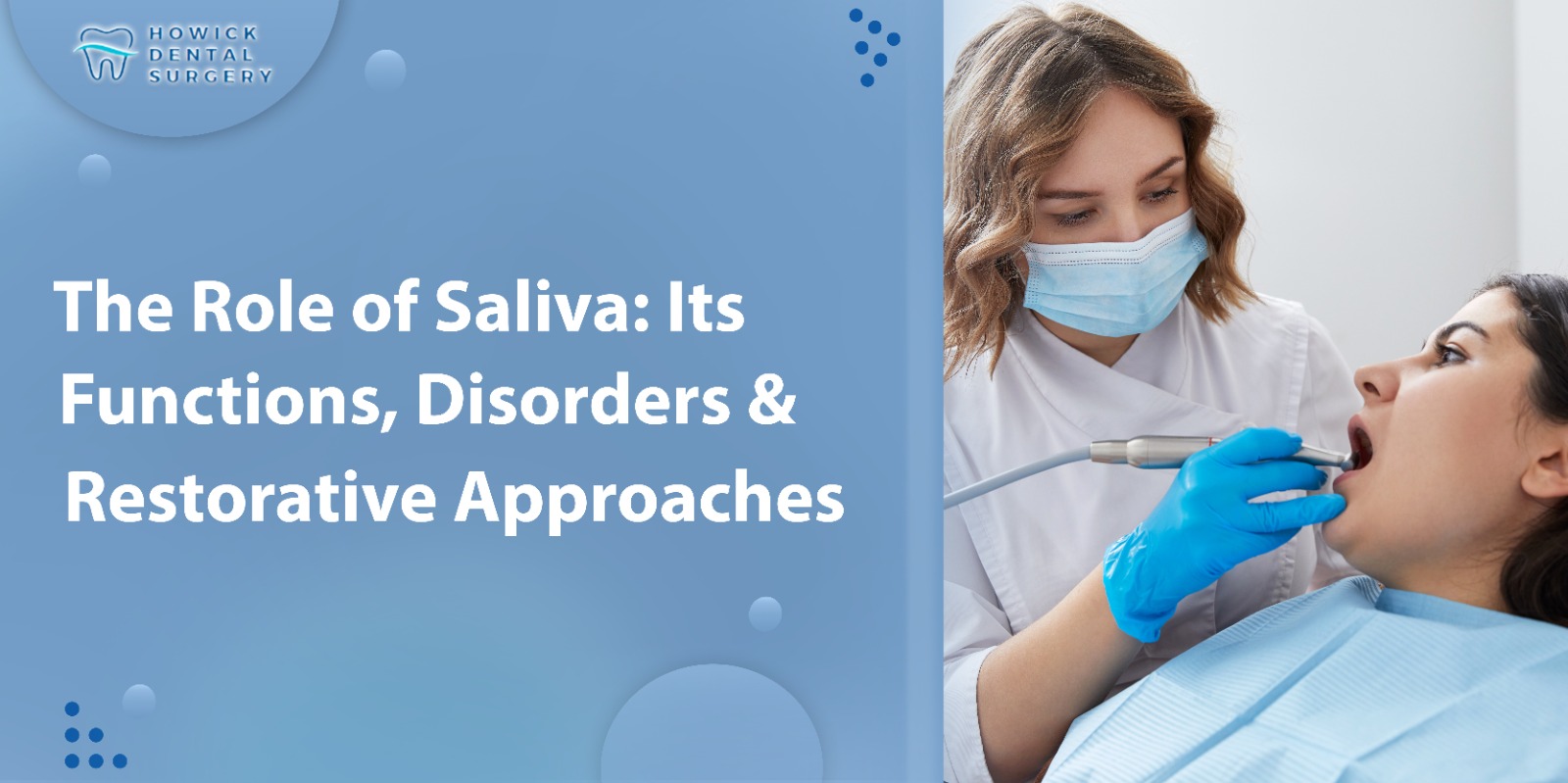Saliva often goes unnoticed — until it’s missing. Yet this watery secretion is vital to your oral health. In New Zealand, where dry mouth (xerostomia) is reported in about 13.1 % of the adult population, with higher rates in older age groups, understanding saliva’s role is especially important.
What Is Saliva & What Does It Do?
Saliva is produced by major (parotid, submandibular, sublingual) and many minor salivary glands throughout the mouth. Under resting (unstimulated) conditions, the submandibular glands contribute most of the flow; under stimulation (e.g. by chewing or taste), parotid glands become more active.
Saliva is about 99 % water, but it also contains electrolytes (calcium, phosphate, bicarbonate), proteins, enzymes, mucins, immunoglobulins, and antimicrobial agents.
Because of its composition, saliva performs many vital roles:
- Buffering & pH control: The bicarbonate, phosphate and protein systems neutralise acids in the mouth, helping to keep the pH in a safer range and slow demineralisation.
- Remineralisation support: Saliva is supersaturated with calcium and phosphate ions, which can be redeposited into early enamel lesions, aiding repair.
- Cleansing & clearance: It flushes away food debris, sugars, and microbial byproducts, reducing the substrate available to harmful bacteria.
- Antimicrobial action & immune functions: Enzymes (lysozyme, peroxidases), immunoglobulins (especially secretory IgA), and other proteins help control microbial populations.
- Lubrication & tissue protection: Mucins and glycoproteins lubricate the mucosal surfaces, aiding speech, swallowing, and protecting tissues from mechanical trauma.
- Pellicle formation: Proteins from saliva form a thin film (acquired pellicle) on tooth surfaces, which acts as a somewhat protective barrier against acid and abrasion.
- Digestion & taste: Enzymes such as amylase begin the breakdown of starches, and the fluid medium helps dissolve taste molecules so they interact with taste receptors.
In short, saliva is a first line of defence for your teeth, gums and oral tissues.
Disorders & Problems of Saliva
When saliva flow or quality is reduced, the protective functions weaken, and the risks to oral health rise. Common issues include:
- Hyposalivation / Reduced flow: Measurable drop in saliva volume, from gland hypofunction, aging, disease, or radiation.
- Xerostomia (dry mouth): A subjective sensation of oral dryness, which may or may not coincide with objective low flow. In NZ, ~13 % of people reported xerostomia in a national survey.
- Consequences of low saliva: More dental caries, enamel erosion, increased sensitivity, mucosal irritation, difficulty in swallowing/speaking, higher plaque accumulation, oral infections (candida), and poor quality of life.
- Causes / risk factors include: many medications (with anticholinergic effects), autoimmune conditions (e.g. Sjögren’s), radiation therapy to head/neck, dehydration, smoking, systemic diseases (e.g. diabetes), and ageing.
Restorative & Supportive Approaches
When saliva is dysfunctional, dentists and patients can use strategies to restore balance or compensate:
Stimulate saliva production
- Chewing sugar-free gum or sucking sugar-free lozenges (especially those with xylitol) can increase flow.
- Use of salivary gland stimulants (under clinical supervision).
- Ensuring adequate hydration and avoiding dryness-promoting habits (like caffeine, alcohol).
Topical salivary substitutes / moisturisers
- Artificial saliva sprays, gels or rinses can provide temporary relief and lubrication.
- Products containing carboxymethylcellulose, hydroxyethylcellulose, or other lubricants are commonly used.
Fluoride and remineralising therapies
- High-fluoride toothpaste or gels, and supplemental calcium/phosphate agents, can help protect teeth when natural saliva is insufficient.
- Some approaches include bioactive remineralising agents (e.g. casein phosphopeptide-amorphous calcium phosphate).
Saliva diagnostics & monitoring
- Saliva testing (measuring flow rate, pH, buffering capacity) can help assess risk and guide personalized care.
- Monitoring changes over time is useful in managing patients at high risk of tooth loss or decay.
Address underlying causes
- Review medications with medical practitioners to reduce or change agents that cause dry mouth.
- Treat systemic conditions (e.g. manage diabetes, autoimmune disease).
- In radiation patients, use techniques such as shielding, sialogogues, or preventive protocols.
Saliva is far more than “just spit.” It is a complex, multifunctional fluid that protects teeth and tissues, buffers acid, supports repair, and aids oral function. In New Zealand, where dry mouth affects a significant proportion of adults, paying attention to saliva health is key to preserving gum and tooth health.
At Howick Dental Surgery, we assess salivary function in high-risk patients, recommend restorative and protective therapies, and tailor treatment plans to your needs. If you notice persistent dryness, sensitivity, or difficulty swallowing, book a consultation — it might be more than just “a dry mouth.”


Leave a Reply